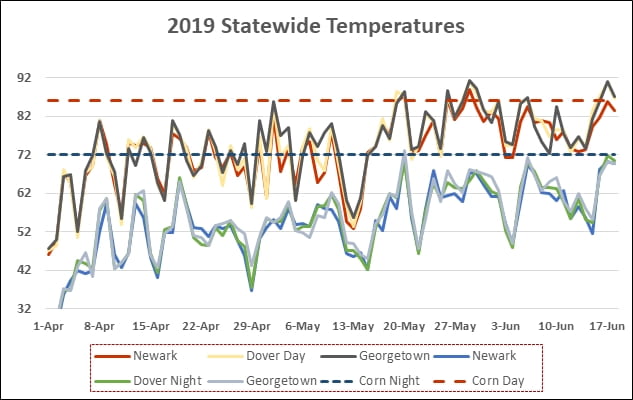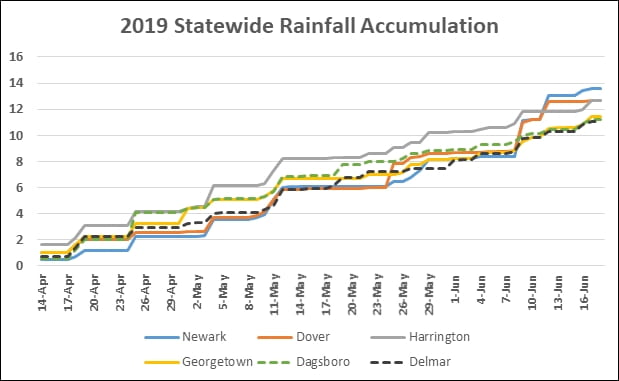Jarrod O. Miller, Extension Agronomist, jarrod@udel.edu
Corn planted on April 24th in Georgetown has just hit the V12 stage, close to the expected GDD of 870 (Table 1). We have observed a few fields of corn tasseling, which would fit the April 14th GDD in Sussex County. Any corn planted in late May has passed V6, and should have been sidedressed, while fields planted in early June are probably close or at V6.
Table 1: Accumulated growing degree-days based on planting dates through June 18th.
|
If you planted ↓ |
Sussex | Kent | New Castle |
| 14-Apr | 1128 | 1084 | 1024 |
| 21-Apr | 1038 | 992 | 938 |
| 28-Apr | 956 | 917 | 858 |
| 5-May | 856 | 836 | 786 |
| 12-May | 755 | 738 | 696 |
| 19-May | 685 | 673 | 636 |
| 26-May | 545 | 537 | 502 |
V6 = 475 GDD, V12 = 870 GDD, VT = 1135 GDD, R1 = 1400 GDD
As we approach tasseling and pollination it is a good idea to start watching day and night temperatures (Figure 1). They have exceeded 92°F during the day and 72°F at night in the past few days, which could hamper pollination and set back yield. While you can’t change the weather, you can account for the effects when trying to determine if your management or weather were the deciding factor in the final yield.
Rainfall still has a steady, linear increase across the state (Figure 2). How it affects planting and field conditions depends on where you are at. Newark has pulled ahead in total rainfall since April 14th with 13.5 inches, while Delmar is the lowest with 11. The larger rainfall events from Harrington north in the last week may be slowing soybean planting on tilled fields.
Figure 1: Statewide temperatures since April 1st.
Figure 2: Statewide rainfall accumulation since April 1st.


